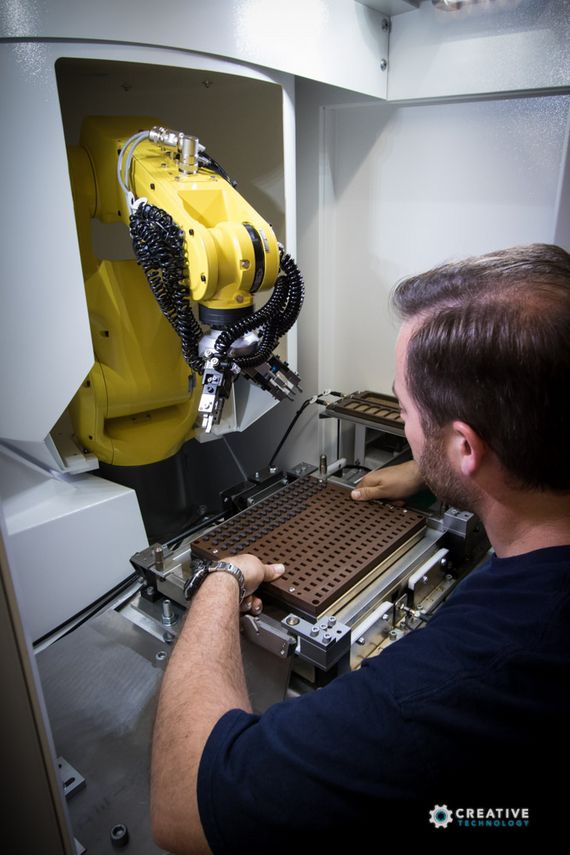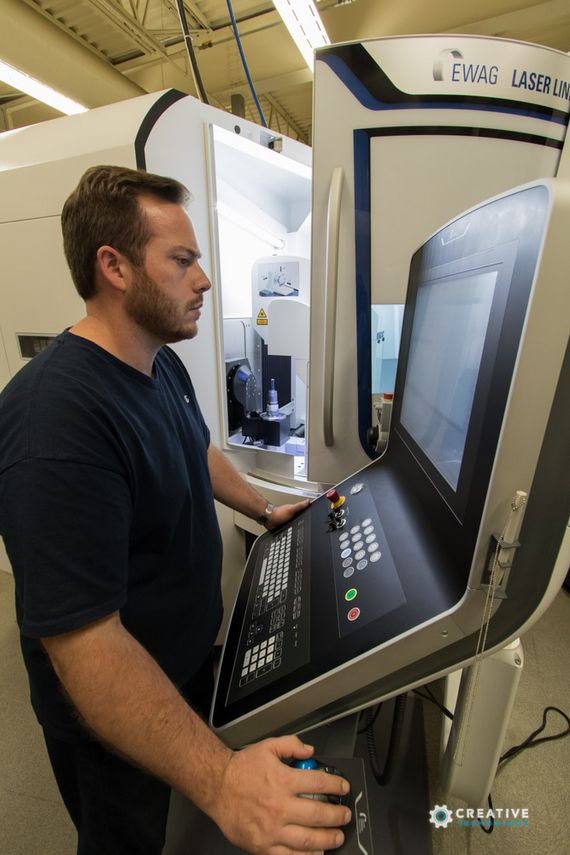LASER TAKES THE HEAT OUT OF TOUGH TOOL GRINDING
Cutting tool maker Shape-Master Tool Company needed to expand its grinding capability beyond that of its conventional machines, which did an excellent job at processing traditional cutting tool materials and complex geometries. As cutting tool materials continued to evolve and present greater processing challenges, the shop had to either up its game or run the risk of losing work to the competition.
When the Kirkland, Illinois, company started grinding cutting tools 40 years ago, it mainly worked on natural diamond materials. Modern cutting tool materials, on the other hand, run the gamut from carbide to man-made monocrystalline diamond (MCD), polycrystalline diamond (PCD), chemical vapor deposition diamond (CVD), cubic boron nitride (CBN) and ceramics. The range of tool types Shape-Master produces has similarly expanded from insertable PCD and PCBN tools to all types of form and rotating tools.
To overcome the specific challenges of advanced cutting tool materials, Shape-Master acquired two laser tool-processing machines — the first of their kind in North America.
The laser technology not only enhances Shape-Master’s cutting tool production and allows it to tackle the tough stuff, it also significantly helps the shop compete against larger custom tooling suppliers. With the laser technology’s production flexibility, Shape-Master now cost-effectively processes jobs involving lot sizes that can range from 50 pieces to thousands needed on a yearly recurring schedule, all while maintaining quality and delivery times.
After only a few months of training and hands-on learning, Shape-Master began using its laser machines to also expand its product range and take on new types of jobs, including rotary tooling. Now, a percentage of jobs running through the systems are rotary tools, and the shop plans to continue to widen its product offerings beyond that.
Plus, Shape-Master was able to bring parts back in-house that it previously had to outsource. This capability is especially important because it aligns with Shape-Master’s overall philosophy and goal of keeping as much work in house as possible.
Shape-Master’s laser machines are EWAG LASER LINEs from UNITED GRINDING. The machines use state-of-the-art, ultra-short pulse laser technology to enable single-clamping, high-quality production of cutting tools with very complex geometries.
With their patented EWAG Laser Touch Machining® Process technology, the machines handle all the latest commercially available cutting tool materials, including carbide, CBN, PCD, CVD and MCD. The machines do not generate heat-affected zones, and resulting tools have exceptionally superior surface finish quality and last longer.
Laser Touch Machining is a tangential laser beam machining process that generates cutting tool edges and geometries by shaping tool surfaces using the outer surface of the laser beam in ultra-short, 10-picosecond pulses. These ultra-short laser pulses directly vaporize material without any significant heat generation. A repetitive hatching pattern of the laser scanning unit coupled with simultaneous movement of the machines’ eight CNC axes generate the tool geometries.
With just under 30 employees, Shape-Master pumps out thousands of tools per month with its laser processing machines and CNC grinders. The majority of tools the company produces are CBN, although a significant percentage of diamond tools also come through the shop. The shop also uses automation to keep production running beyond its standard 1.5 shift-per-day production schedule.
Both of Shape-Master’s LASER LINE machines are equipped with automation. One has an integrated 6-axis FANUC robot, a two-in-one HSK 63-tool rack and pallets — all of which provides continuous, fully automated and lights-out production of a variety of rotating-type tools. This machine also automates the shop’s high-volume production of inserted diamond tools.
Shape-Master’s other LASER LINE machine features a stacker unit that doubles in capacity depending on the height of its pallets. When processing lower-profile/shorter tools, upwards of eight pallets fit in the stacker, and each holds up to 300 pieces. Such flexible automation was a major factor in Shape-Master’s decision to acquire the EWAG LASER LINE machines.
“We’ve always used EWAG grinding machines,” commented Dan Chambers, applications manager at Shape-Master Tool. “We first used EWAG manual machines, then added EWAMATIC LINE CNC grinders in the 1990s, and those machines are still in use to this day.”
Chambers said it took some time for Shape-Master to become comfortable with the operation and capabilities of its LASER LINE machines. Formal training included a week at EWAG’s headquarters in Switzerland and a week of in-house training at the shop. But he added that training is always an ongoing process.
“UNITED GRINDING is adamant about training and technical support of all the equipment they provide,” said Chambers. “Their customer support is extremely comprehensive and accessible. They are always there to handle any problem or answer our questions. I doubt we could have accomplished all we have without their support.”
He added that the shop easily programs the LASER LINE machines with EWAG’s user friendly software and that the software is based on the company’s CNC grinding package. But, with multiple axes and laser heads, the LASER LINEs act more like machining centers than CNC grinders.
At Shape-Master, the LASER LINE machine laser scan heads typically feed at feed rates of several thousand mm/min and with incremental stepovers as small as 0.2 micron as they traverse over a tool. Laser machining cycle times range from roughly a minute to an hour depending on geometric complexity and tool size. Most of that time is spent on and very near the cutting edges.
“The laser generates geometries, finishes and edge preps that would otherwise be very difficult or even impossible to produce with CNC grinding,” explained Chambers. “When it comes to edge preps for instance, conventional grinding can produce sharp edges in the range of 5 to 10 microns. Laser machining, on the other hand, can produce edges in the 1.5- to 5-micron range. The noticeably increased sharpness is a significant advantage for us.”
Conversely, the laser beam can round an edge to provide extra strength and do so in a single operation — the equivalent of combining CNC grinding with a secondary honing operation. The LASER LINEs can also produce chamfers and other 3D edge geometries.
Customers use Shape-Master tools to machine components made from materials ranging from cast irons and steels to depleted uranium, aluminum alloys and composite materials for a variety of industries that include automotive, aerospace, energy and many others.
According to Chambers, Shape-Master has produced tools for space exploration components as well as components for U.S. defense systems. He also pointed out that a lot of the shop’s aerospace customers work with composites and exotics, and he believes those types of materials will continue to make their way into the automotive industry — also for weight reduction and fuel efficiency as is the case in aerospace. So the same advanced tooling the shop makes for its aerospace industry customers will soon transfer to the automotive industry as well.
“Our repeat customers would recommend us because of our high-quality products, service and employees,” said Chambers. “We cater to all the needs of our customers, and we have invested a lot of capital in technology, inspection equipment and finishing equipment to be able to do so and to compete with and provide better products than the competition. That’s what our customers expect, and that’s what our EWAG machines help us deliver.”










